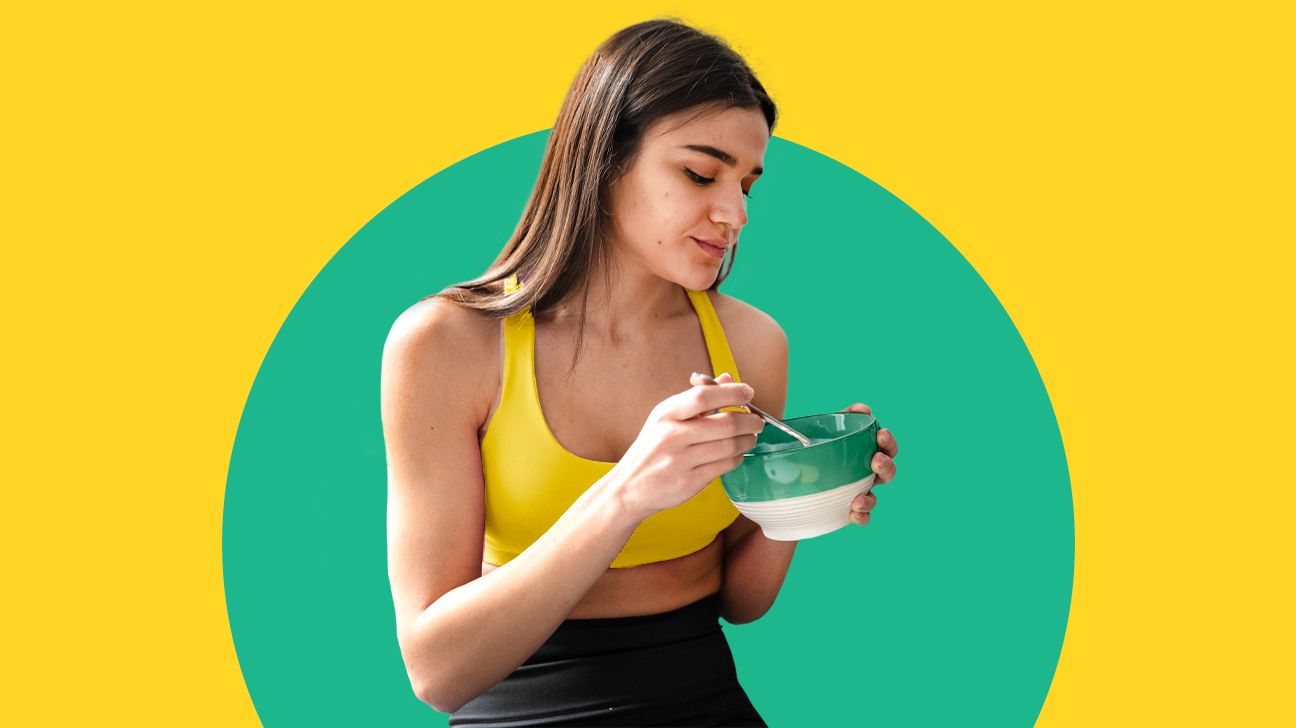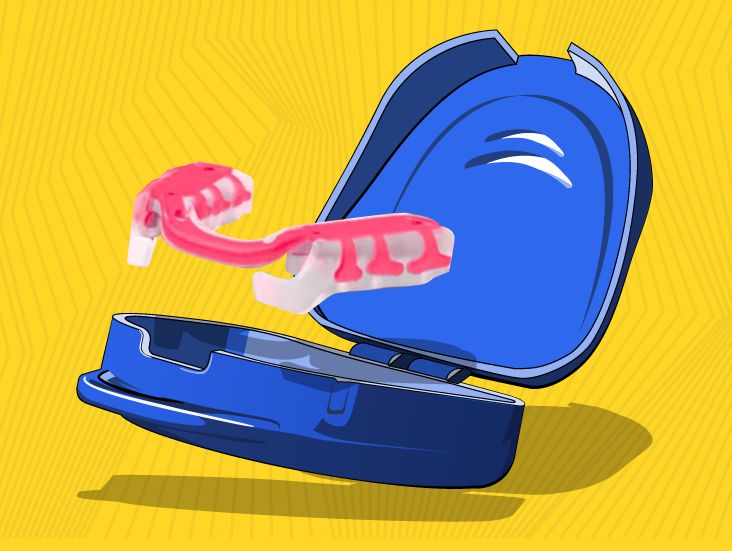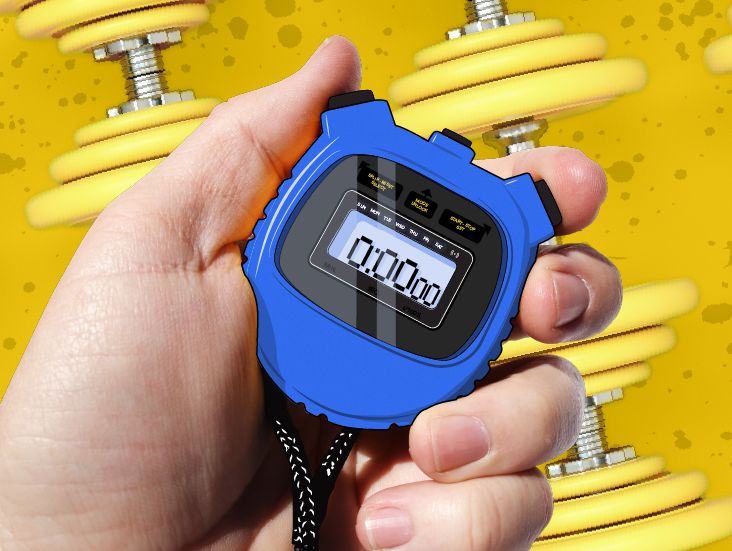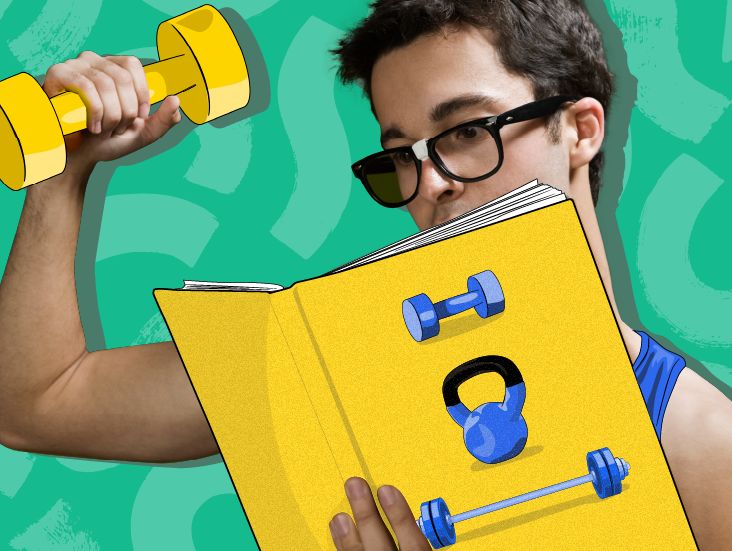We include products we think are useful for our readers. If you buy through links on this page, we may earn a small commission. Here’s our process.
Greatist only shows you brands and products that we stand behind.
Our team thoroughly researches and evaluates the recommendations we make on our site. To establish that the product manufacturers addressed safety and efficacy standards, we:- Evaluate ingredients and composition: Do they have the potential to cause harm?
- Fact-check all health claims: Do they align with the current body of scientific evidence?
- Assess the brand: Does it operate with integrity and adhere to industry best practices?
When it comes to health and fitness, the ideas of being vegan and getting big strength gains aren’t traditionally put into the same pot together. But they absolutely can be. All it takes is a little extra focus on making your fuel work in your favor.
Here’s your #vegainz guide.
Build muscle meat without eating meat? Bet.
“It is absolutely possible to put on muscle while following a fully plant-based or vegan diet,” says certified clinical nutritionist Dr. Vikki Petersen, founder of Root Cause Medical Clinic in Saratoga, California.
Hey, just ask the literal strongest man in the world(!), Hafþór Júlíus Björnsson, who was crowned World’s Strongest Man four times on a fully vegan diet. (If you watched the pro-plant-based Netflix documentary “Game Changers,” his name should ring a bell.)
To understand why and how muscle growth is possible on a vegan diet, you need to understand how your body builds muscle.
To get stronger or put on muscle mass, two things need to happen.
First, you need to create little microscopic tears in your muscle fibers.
How? Exercise. Specifically, strength-based exercise.
Why? Because once repaired, your muscle fibers — and therefore your muscles — are even stronger than they were before.
Second, you need to recover in such a way that those tears can repair themselves and build back stronger.
That means sound sleep quality and quantity, managing stress levels, and adequate fuel and water intake.
(And no, “adequate fuel” is NOT synonymous with “meat.”)
And the best fuel for muscle repair and growth is…?
The short answer: protein.
“Muscle tissues are primarily made up of protein, and protein is made up of little building blocks called amino acids,” explains Petersen. “Therefore, in order to rebuild muscle tissue, you need to consume an adequate amount of amino acids.”
The common assumption is that it’s not possible to get enough protein on a vegan diet. But that’s not the case!
“There are plenty of easy and healthy vegan protein sources,” says Petersen.
These include:
- beans (black beans, chickpeas, lentils, pinto beans, mung beans, garbanzo beans)
- seeds (hemp seeds, pumpkin seeds, chia seeds, flaxseed)
- protein powder (pea, hemp)
- nuts (almonds, cashews, walnuts)
- soy products (tofu, tempeh, edamame)
- green leafy vegetables (kale, spinach, broccoli)
- whole grains (quinoa, oats, bulgur, whole-wheat pasta)
Here’s the catch: There are 21 amino acids in total, 9 of which are considered “essential” (as in “essential to consume”) because your body does not make them, explains Dr. John Ivy, a world-renowned expert on sports nutrition and exercise performance and the president of HumanN’s Science Advisory Board.
Many plant-based protein sources (with the exceptions of quinoa, soy, and a few others) are incomplete, meaning they’re limited in one of the essential amino acids (legumes are low in methionine, and grains and nuts are low in lysine).
To build as much muscle as you want, you need to get these essential amino acids. The best way to do that while vegan is to consume a variety of vegan protein sources.
So, how much protein does a vegan lifter need, exactly?
The same amount as a nonvegan lifter!
“If you want to gain muscle, the American College of Sports Medicine recommends that you consume somewhere between 1.2 to 1.7 grams of protein per kilogram of body weight,” Petersen says.
To find out your protein needs, first convert your weight to kilograms by dividing your weight in pounds by 2.2. Next, multiply that number by 1.2 and 1.7 to find a range.
So, a 150-pound (68-kilogram) person would need to consume 82 to 116 grams of protein per day to put on muscle mass, and a 200-pound (91-kilogram) person would need to consume 109 to 154 grams of protein per day.
“If this amount of protein intake does not result in gains, you may consider boosting your intake even more to 1.8 to 2.2 grams per kilogram of body weight,” says Ivy.
Don’t forget carbs and fat, though!
“While protein is important, all nutrients are required for optimal health and muscle mass,” says Peterson.
The two other key macronutrients besides protein are carbohydrates and fat. To put on muscle mass, 10 to 35 percent of your calorie intake should come from protein, 45 to 65 percent should come from carbs, and 20 to 35 percent should come from fat.
Ivy mentions that one of the biggest mistakes people make when going for gains — especially people who want to look toned — is not consuming enough calories.
“To gain muscle, it’s beneficial to have a positive caloric balance, meaning eat more calories than you expend,” he says.
The best way to find out your calorie intake needs is to work with a sports nutritionist, who will use your sex, age, activity level, current weight and height, and weight goals to determine your needs.
If consulting a registered dietitian nutritionist is not an option for you, there are online calculators (like this one) that can help you estimate your energy needs.
Next, track your calories using an app like MyFitnessPal to make sure you’re hitting your calorie target.
If you find you’re low on calories, add some (healthy) fat-rich vegan snacks into the mix (think: avocado, guacamole, peanut butter, almond butter, olive oil, and edamame).
Building muscle while vegan is totally possible! And the rules of doing so are the same as they are for meat eaters: Prioritize protein, eat enough carbs and healthy fats, and clock in enough calories.
Gabrielle Kassel (she/her) is a queer sex educator and wellness journalist who is committed to helping people feel the best they can in their bodies. In addition to Healthline, her work has appeared in publications such as Shape, Cosmopolitan, Well+Good, Health, Self, Women’s Health, Greatist, and more! In her free time, Gabrielle can be found coaching CrossFit, reviewing pleasure products, hiking with her border collie, or recording episodes of the podcast she co-hosts called Bad In Bed. Follow her on Instagram @Gabriellekassel.






